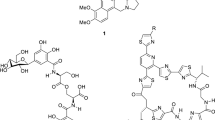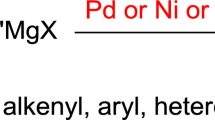Abstract.
Atom transfer radical polymerization (ATRP) was demonstrated to yield well-defined polyacrylates with halogen end groups. These halogen end groups were transformed to azide groups which were subsequently reduced into amino groups. The replacement of the halogen end groups by azide groups was obtained either by using sodium azide or by treatment with trimethylsilyl azide in the presence of both stoichiometric and catalytic amounts of tetrabutylammonium fluoride (TBAF). The azide end groups were reacted with triphenylphosphine in order to obtain iminophosphorane groups which were then hydrolyzed yielding amino terminated polyacrylates.
Similar content being viewed by others
Author information
Authors and Affiliations
Additional information
Received: 7 October 1997/Revised version: 15 December 1997/Accepted: 18 December 1997
Rights and permissions
About this article
Cite this article
Coessens, V., Nakagawa, Y. & Matyjaszewski, K. Synthesis of azido end-functionalized polyacrylates via atom transfer radical polymerization. Polymer Bulletin 40, 135–142 (1998). https://doi.org/10.1007/s002890050234
Issue Date:
DOI: https://doi.org/10.1007/s002890050234




